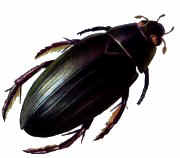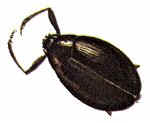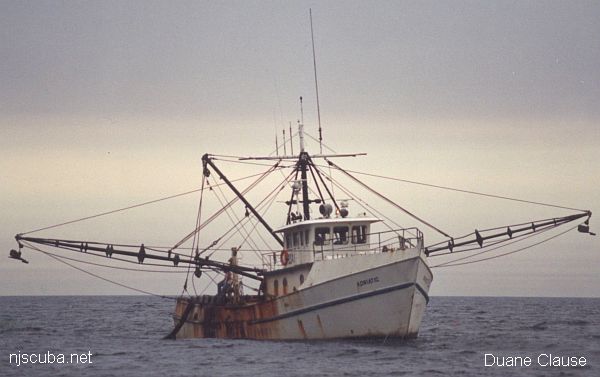Water Beetles
Beetles are differentiated from bugs by having the first pair of wings developed into armored shields, which protect the second pair of wings and the soft body. They can still fly with their second pair of wings, which fold up out of sight when not in use. Only adults are shown here.

Water Scavenger Beetle
Hydrophilus triangularis
to 1.3"
Adults feed mainly on plant matter; larvae are carnivorous. Other diving beetles are predatory.

Whirligig Beetle
Dineutes spp.
to 1/2"
Whirligigs are generally found skating along the surface, although they are also good divers and fliers.

